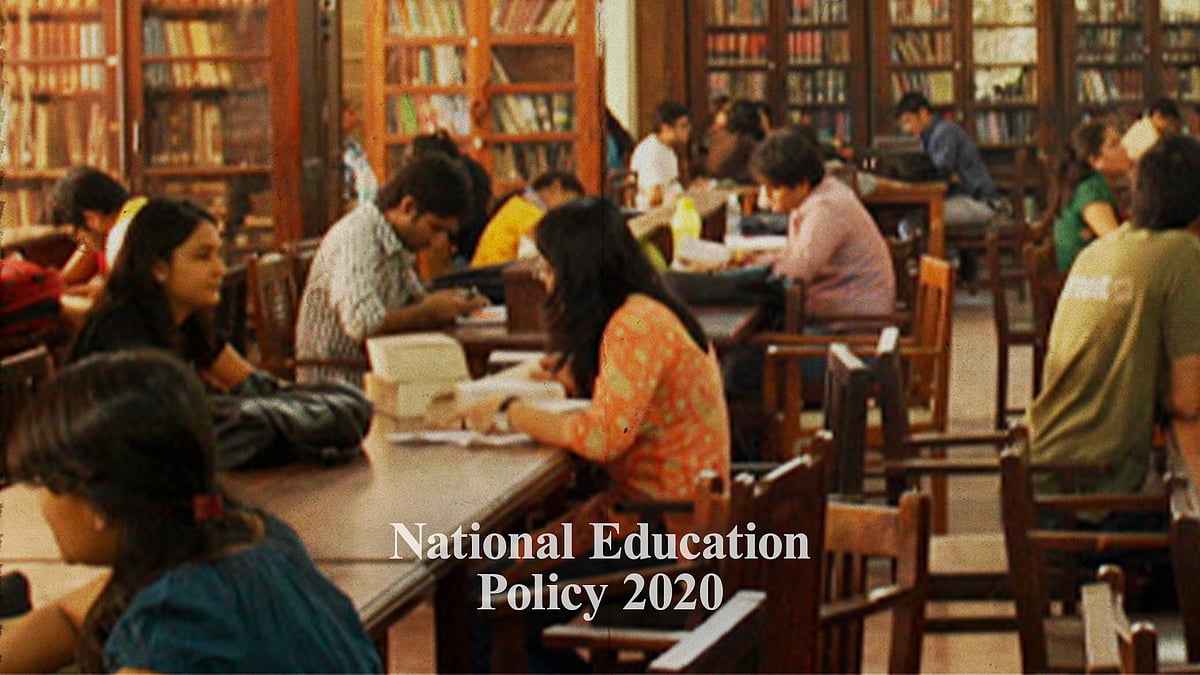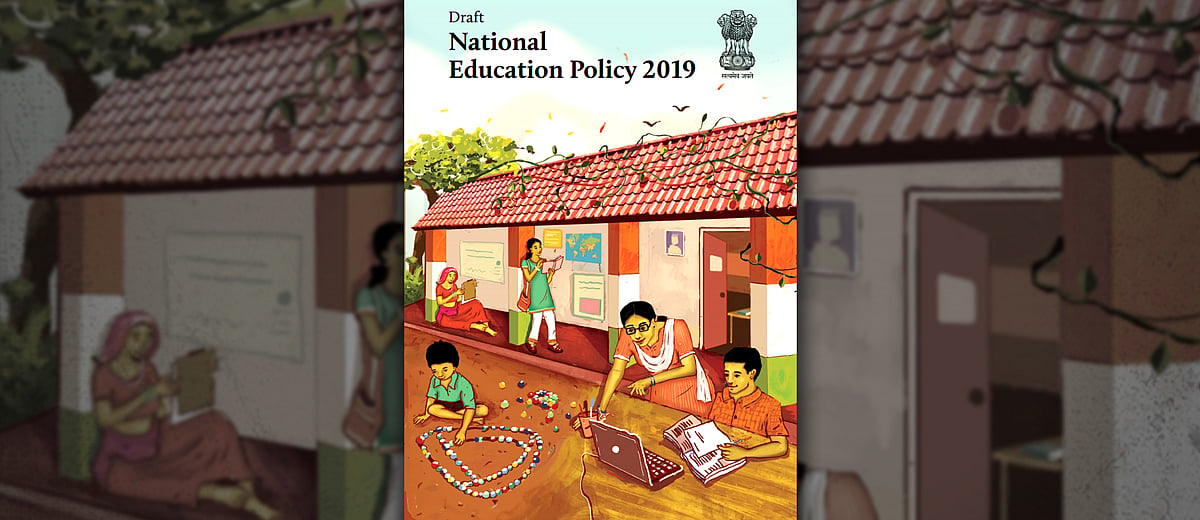It was a welcome change that Narendra Modi addressed the nation about the National Education Policy 2020 on August 7. His regime is known for changing laws overnight without much discussion. But this time, the prime minister not only presented highlights of the NEP to the country, he even encouraged a debate on it.
So, in the spirit of debate and discussion, let’s explore some of the recommendations of the NEP in the context of multilingualism and the three-language formula.
In a widely lauded recommendation, the new policy provides for multilingual instruction in primary school. Why? “Research clearly shows that children pick up languages extremely quickly between the ages of 2 and 8 and multilingualism has great benefit to young students with a focus on learning mother tongue in early years...and with skills developed for reading and writing in other languages in Grade 3 and beyond,” the policy document explains.
While the NEP underlines the natural ability of children to learn a language quickly in their initial years, it fails to acknowledge that learning to read and write needs deliberate effort by not just the children but the adults as well.
Thus, introducing reading and writing in two other languages apart from the mother tongue from Grade 3 does not change the existing structure of language learning. Additionally, it adds to the burden of teachers and students to start learning three languages from the third grade. It, therefore, feels this recommendation has received undue praise.
Now, let’s examine the three-language formula.
Though the policy recommends learning in three languages, it does not compulsorily prescribe Hindi. "There will be greater flexibility in the three language formula, and no language will be forced on states,” the policy clarifies. “The three languages learned will be the choice of state, region and of course the students as long as two of the three languages are native to India”.
Surprisingly, this provision has not received criticism from states, linguists and educationists, except in Tamil Nadu. It should. While the recommendation can be interpreted as allowing states flexibility in choosing the languages that suit their linguistic profiles, that isn’t the whole story. There are several problems with it.
The key problem is the often subtle and sometimes explicit promotion of Hindi or Sanskrit through the NEP’s consistent emphasis on “native Indian languages”. We can understand this by looking at possible language combinations for some of the states.

The combinations are merely illustrative. The first language is the likely mother tongue, spoken by most of the people in that state, but I have not assigned a hierarchy to the other two languages. The combination, or its order, can change depending on which political formation is in power.
For instance, if Uttar Pradesh chief minister Adityanath reads the NEP’s vision statement and decides to prepare the state’s school curriculum in line with it, it might happen that Sanskrit gets prominence over English in India’s most populous province.
For the policy’s vision is "to instil among the learners a deep-rooted pride in being Indian, not only in thought, but also in spirit, intellect and deeds, as well as to develop knowledge, skill, and values, and dispositions that support responsible commitment to human rights, sustainable development and living, and global wellbeing, thereby truly a global citizen".
To justify his decision, Adityanath might well ask, “Which language can instil pride in being Indian, not only in thought but also in spirit, more than Sanskrit?” Akhir Sanskrit se jyada kya Bhartiya hoga?
Then, there’s clause 4.17 of the NEP which dwells on the relevance, importance and beauty of Sanskrit. "Sanskrit will thus be offered at all levels of the school and higher education as an important, enriching option for students, including as an option in the three language formula,” the policy states.
It can be argued that this is only a recommendation. But given how fervently the governing BJP and its ideological parent, the Rashtriya Swayamsevak Sangh, have been pushing for the use of Hindi and Sanskrit nationally, would states, more so those ruled by the BJP, have much choice in the matter?
It can also be argued that like NEP 1968, NEP 2020 favours the idea of having a link language for all of India, and Hindi and Sanskrit are good options.
Allow me to present a counter-argument. Say, there is a child named A studying in Manipur and another named B in Gujarat. According to the NEP, Manipur’s three languages of instruction are likely to be Manipuri, English, Hindi or Assamese. In Gujarat, they’re likely to be Gujarati, English and Hindi. A and B, say, become software engineers and find work in Bangalore and Chennai, respectively. How will their third language, Hindi, empower them in their places of work? There may be a few people whom A and B can communicate with in Hindi or English there. Mostly though they will likely find it difficult.
One may well ask, “Why were A and B burdened with learning Hindi in school?”
If they go to work in, say, Germany and don’t speak the German language, would the Indian state have failed to prepare them as global citizens?
Moreover, by promoting Hindi and Sanskrit in the policy document, subtly or explicitly, NEP 2020 pushes states to assign resources for them.
It may be argued that the three-language formula is not necessarily an excuse to divert funds towards Hindi or Sanskrit. To see whether that’s the case, we have to look at the curricula design process. The primary institution for curriculum design in India is the NCERT. If the NEP recommends availability of material at all levels in Sanskrit, wouldn’t the NCERT be bound to design and publish material in Hindi, English and Sanskrit. And how functional and capable are similar state institutions to accomplish this task in their regional languages?
The NEP also undermines India’s oral learning traditions as also the ability of an adult to learn and communicate in the language when they so desire. Why is the Indian state speculating on a connecting language for people from diverse states with a range of options – of not leaving their state at all, of moving in and out of multiple states, of moving between countries.
Another problem is the NEP’s unrealistic attempt to have children pick a language of their choice. “The students who wish to change one or more of the three languages they are studying can do so in Grade 6 or 7, as long as they can demonstrate basic proficiency in three languages (including one language of India at the literature level) by the end of secondary school,” the policy states.
Let’s use the previous example to explain the pragmatic challenges here. Suppose A chooses to learn a foreign language, German, as he wants to join a graduate programme in Germany. B wants to study Urdu and French. Both have demonstrated basic proficiency in the three languages they learned in primary school.
A few assumptions have to be pointed out before elaborating this example. First, no public school is likely to offer these options due to the lack of all kinds of resources. Second, even if we assume that some public schools funded by the central government, such as the Kendriya Vidyalaya or the Sainik School, or private schools might offer such diverse language options, the question remains whether a child will have any actual freedom to excel in a language of their interest?
Now, both A and B have to learn three languages in primary school. Subsequently, while they can choose to study German and Urdu and French, they will still be required to learn one of their Indian languages, at the proficiency level of literature, by the end of secondary schooling. For B, this won’t present much difficulty since they already chose Urdu, a language listed in the eighth schedule of the Indian constitution. Student A, however, will have to pick an Indian language ignoring interest and aspiration.
To ensure greater flexibility, the NEP could have given A and B the choice to attain literature-level proficiency in any language and not necessarily an Indian language?.
Lastly, what would happen to A and B if they don’t accomplish literature-level proficiency in any Indian language at the end of secondary school? The NEP leaves this to our interpretation and imagination. One wonders why it articulates this expectation then?
I cannot reiterate enough that the three-language formula is an outdated solution to multilingualism and to the idea of having a connecting language in this diverse linguistic demography called India.
Even as the NEP envisions empowering our children with 21st century skills, its insistence on the three-language formula is misplaced considering that most of our children do not achieve basic literacy in even one language. I don’t deny the possibility that some of these erroneous recommendations would be addressed by states while designing their curricula. Still, we need to reflect on what curricula design, learning outcomes, and socioeconomic and political changes we would have been possible in the absence of the three-language formula in the time between it was introduced in NEP 1968 and reiterated in NEP 2020. And the changes that could have been possible in the time between NEP 2020 is implemented and the next one is formulated.
Seema Sirohi is a policy analyst with interests in education, policymaking and governance. She's an alumna of Azim Premji University.
 Operation Vishwaguru: How NEP 2020 aims to make India a ‘global study destination’
Operation Vishwaguru: How NEP 2020 aims to make India a ‘global study destination’ What the draft National Education Policy 2019 leaves out
What the draft National Education Policy 2019 leaves out